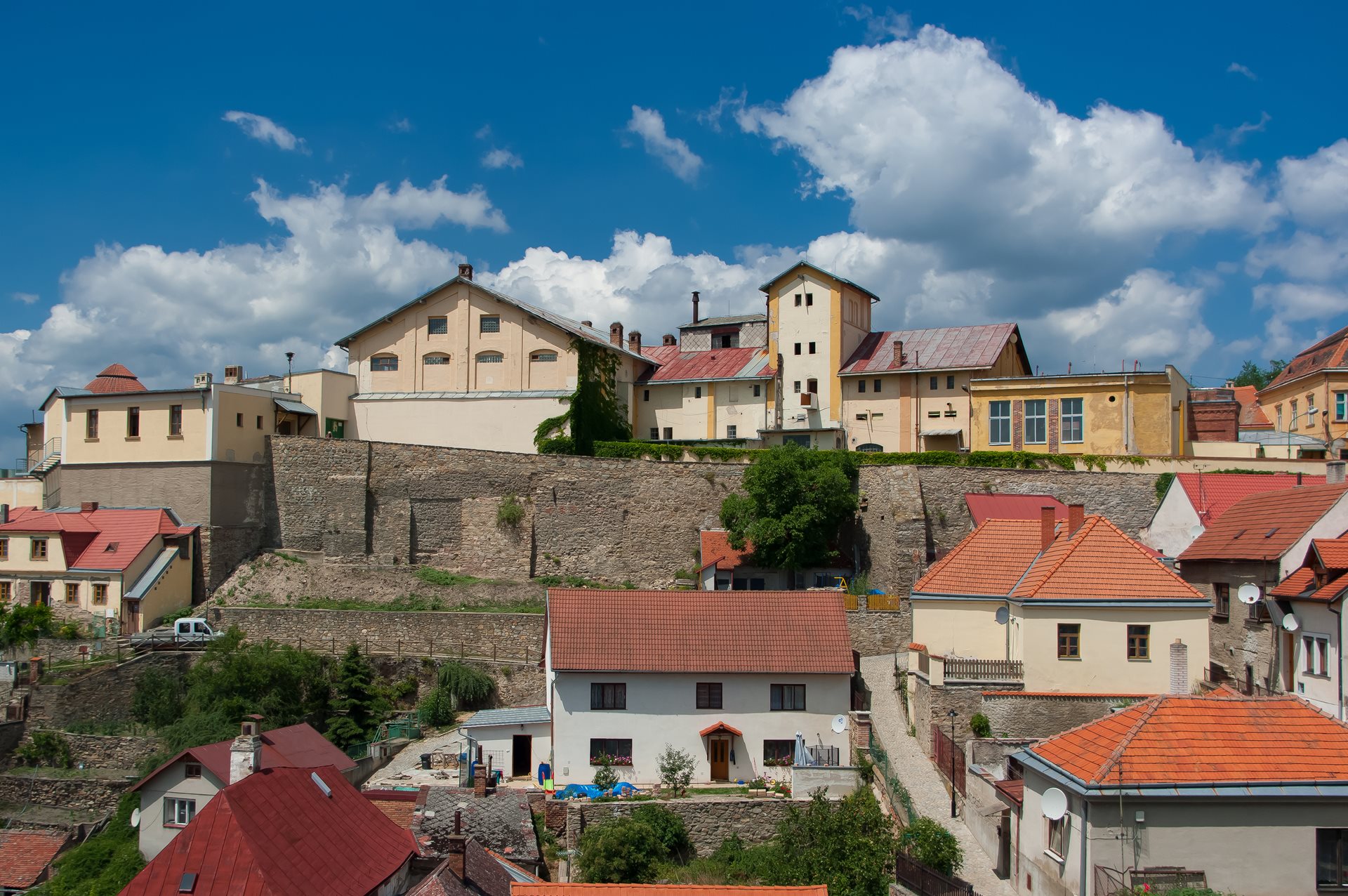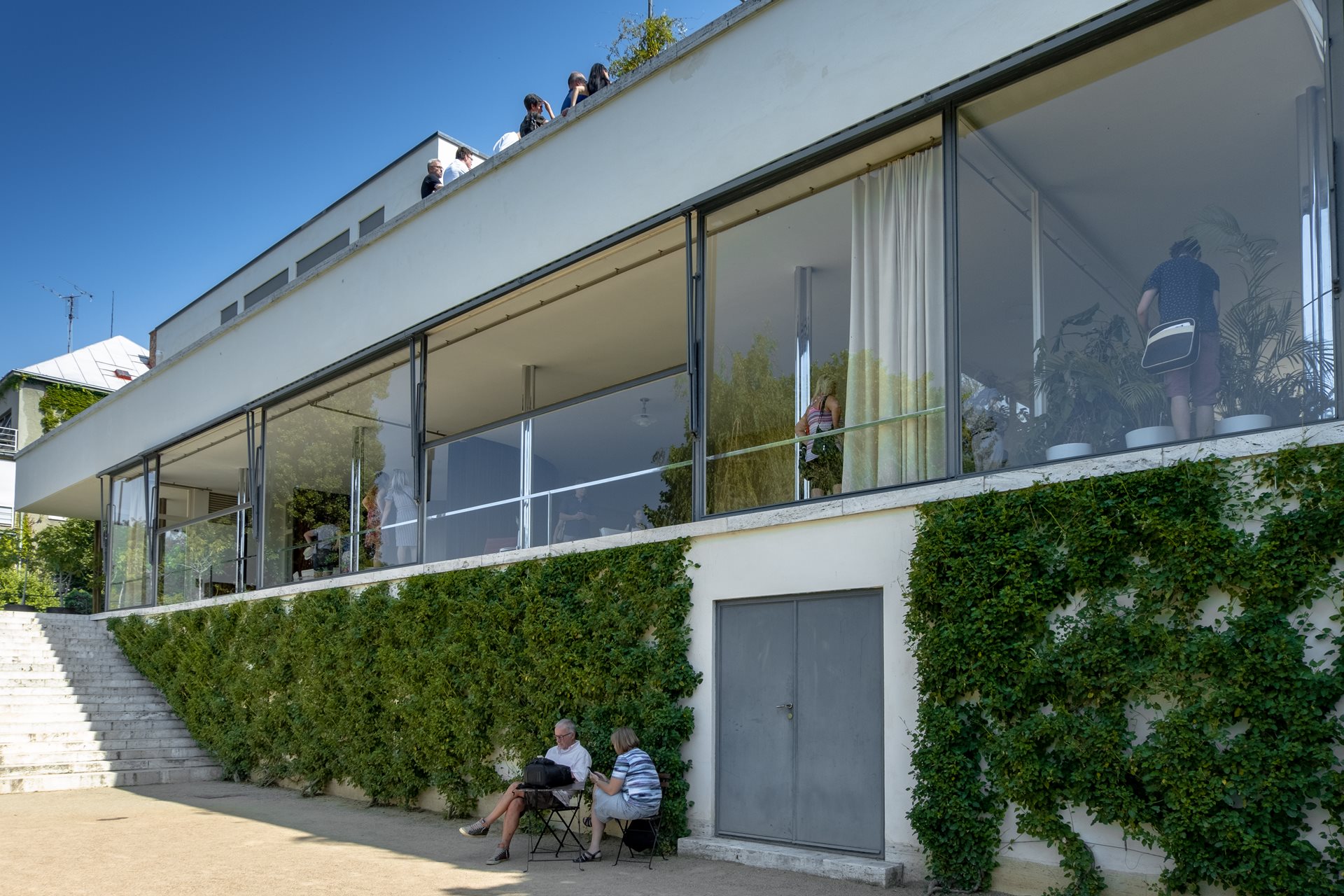Headquaters of glassmakers in the North Bohemian town of Nový Bor, original round dungeons on Prague embankments, a winery, town hall, museum or kindergarten: these are just a selection of buildings that represent the Czech Republic in the new year of the prestigious Mies van der Rohe Award competition.
Come and get acquainted not only with them, but also with the favorites and winners of previous rounds. Of course, we will not leave out the famous Villa Tugendhat, the authentic footprint of the architect Ludwig Mies van der Rohe and the only domestic modern building inscribed on the UNESCO World Heritage List.

The European Union Prize for Contemporary Architecture - Mies van der Rohe Prize has been organized by the European Commission since 2001 in cooperation with the Barcelona Foundation Fundació Mies van der Rohe. The award is presented every two years and the judges award the best projects across European countries. If it were a year like any other, the most prestigious architectural show of the old continent would have already published a shortlist of finalists. But the current year will be different: not only did it include buildings from Armenia, Moldova and Tunisia, but the number of 449 works from 41 countries is not final either. As the construction and assessment are complicated by coronavirus measures, the organizers have extended the deadlines. The new condition is that the constructions be completed between October 2018 and April 2021, and this September the commission will publish other nominated projects. We will know the results only in the spring of 2022.

Because the organizers of the prestigious European show are well aware that buildings and infrastructure are responsible for at least 40 percent of all greenhouse gas emissions, in the current year, projects that go hand in hand with sustainability are the priority. The European Union's Mies Prize therefore gives the green light, above all, to the reconstruction, adaptation and transformation of existing buildings. Those in the Czech eleven are represented, for example, by the new town hall of Prague 7, which was created by the reconstruction of an older administrative building, or the former brewery and technical building in the center of Znojmo, which architects Chybík + Krištof transformed into the Enotéka wine bar. The First Republic villa has its history, transformed into a "family house in a steel corset", on the contrary, the kindergarten in the Vratislavice nad Nisou district of Liberec is also worth seeing in the new buildings. Architects Petr Stolín and Alena Mičeková used a lightweight fiberglass facade, similarly to their older project Zen-Houses (awarded the Czech Prize for Architecture in the first year of the competition).

When it comes to Villa Tugendhat, the famous architect and the Mies van der Rohe Prize, it's time to get acquainted with the building they were already comparing at the time the villa was built: the German pavilion that Mies van der Rohe designed for the World's Fair in Barcelona. Both buildings were created in Mies' office at the same time, they were connected by key formal features and a new concept of architectural space. But while the villa remained, the pavilion in Barcelona was dismantled after the exhibition. However, as Mies' international fame gradually grew during the 20th century, Barcelona councilors also realized that the pavilion could be a major tourist attraction, and so a replica was created in the 1980s. The relationship with Villa Tugendhat is unquestionable, from the shape of chrome columns through combinations of glass, onyx, travertine and various types of marble to the icon of modern furniture designed by Mies, the Barcelona armchair. It is quite symbolic that it is in the Mies Pavilion Barcelona that the European Union Awards for Contemporary Architecture are presented.



The European Union Prize for Contemporary Architecture - Mies van der Rohe Prize has been organized by the European Commission since 2001 in cooperation with the Barcelona Foundation Fundació Mies van der Rohe. The award is presented every two years and the judges award the best projects across European countries. If it were a year like any other, the most prestigious architectural show of the old continent would have already published a shortlist of finalists. But the current year will be different: not only did it include buildings from Armenia, Moldova and Tunisia, but the number of 449 works from 41 countries is not final either. As the construction and assessment are complicated by coronavirus measures, the organizers have extended the deadlines. The new condition is that the constructions be completed between October 2018 and April 2021, and this September the commission will publish other nominated projects. We will know the results only in the spring of 2022.

Czech eleven
Eleven buildings that have been erected in recent years in the Czech Republic can receive the prestigious Mies van der Rohe Award. For example, the glass house and headquarters of the Lasvit glass company in Nový Bor, awarded the Main Prize of the Czech Architecture Prize 2020, the Jan Palach Memorial in Všetaty, the new headquarters of the Lahofer Winery near Znojmo and the revitalized Prague embankment.Because the organizers of the prestigious European show are well aware that buildings and infrastructure are responsible for at least 40 percent of all greenhouse gas emissions, in the current year, projects that go hand in hand with sustainability are the priority. The European Union's Mies Prize therefore gives the green light, above all, to the reconstruction, adaptation and transformation of existing buildings. Those in the Czech eleven are represented, for example, by the new town hall of Prague 7, which was created by the reconstruction of an older administrative building, or the former brewery and technical building in the center of Znojmo, which architects Chybík + Krištof transformed into the Enotéka wine bar. The First Republic villa has its history, transformed into a "family house in a steel corset", on the contrary, the kindergarten in the Vratislavice nad Nisou district of Liberec is also worth seeing in the new buildings. Architects Petr Stolín and Alena Mičeková used a lightweight fiberglass facade, similarly to their older project Zen-Houses (awarded the Czech Prize for Architecture in the first year of the competition).

Villa Tugendhat and Barcelona Pavilion
When the unlimited budget, a world-renowned architect and a wedding gift for the daughter of a rich industrialist come together, Villa Tugendhat is built: a building designed by architect Ludwig Mies van der Rohe (1886–1969) completed in 1930 cost five million crowns, for which dozens of family houses were bought at the time. Even though the tours of the only modern UNESCO monument in the Czech Republic are stopped right now, you can book them and start looking forward to them. A visit to the Brno functionalist building, which belongs to the basic works of world architecture and at one time shifted the standards of modern living, is a real experience.When it comes to Villa Tugendhat, the famous architect and the Mies van der Rohe Prize, it's time to get acquainted with the building they were already comparing at the time the villa was built: the German pavilion that Mies van der Rohe designed for the World's Fair in Barcelona. Both buildings were created in Mies' office at the same time, they were connected by key formal features and a new concept of architectural space. But while the villa remained, the pavilion in Barcelona was dismantled after the exhibition. However, as Mies' international fame gradually grew during the 20th century, Barcelona councilors also realized that the pavilion could be a major tourist attraction, and so a replica was created in the 1980s. The relationship with Villa Tugendhat is unquestionable, from the shape of chrome columns through combinations of glass, onyx, travertine and various types of marble to the icon of modern furniture designed by Mies, the Barcelona armchair. It is quite symbolic that it is in the Mies Pavilion Barcelona that the European Union Awards for Contemporary Architecture are presented.

Known and unknown applicants from the year 2019
The European Union Prize for Contemporary Architecture was first awarded in 1987 but no Czech building has ever won. But you certainly know some domestic applicants: twelve of them joined last year, at random the DOX Center for Contemporary Art in Prague, Kinonekino in Planá, the upper station of the cable car in Pustevny, the modern church of St. Václav in Sazovice, Letenská water tower, the Štajnhaus boarding house in Mikulov or the multifunctional Kotelna in Libčice nad Vltavou, in Prague the Doubravka lookout tower and the multifunctional Drn house. But an international jury of architects, journalists and theorists surprised everyone: the winner of the 2017 award was the renovation of a huge, four hundred meter long block of flats in Amsterdam by a team of local architects. For the first time in the history of the Mies van der Rohe awards, not new buildings but older buildings were awarded. Will this trend continue? All you have to do is wait for another year.






-(1).jpg?width=1920&height=1204&ext=.jpg)



